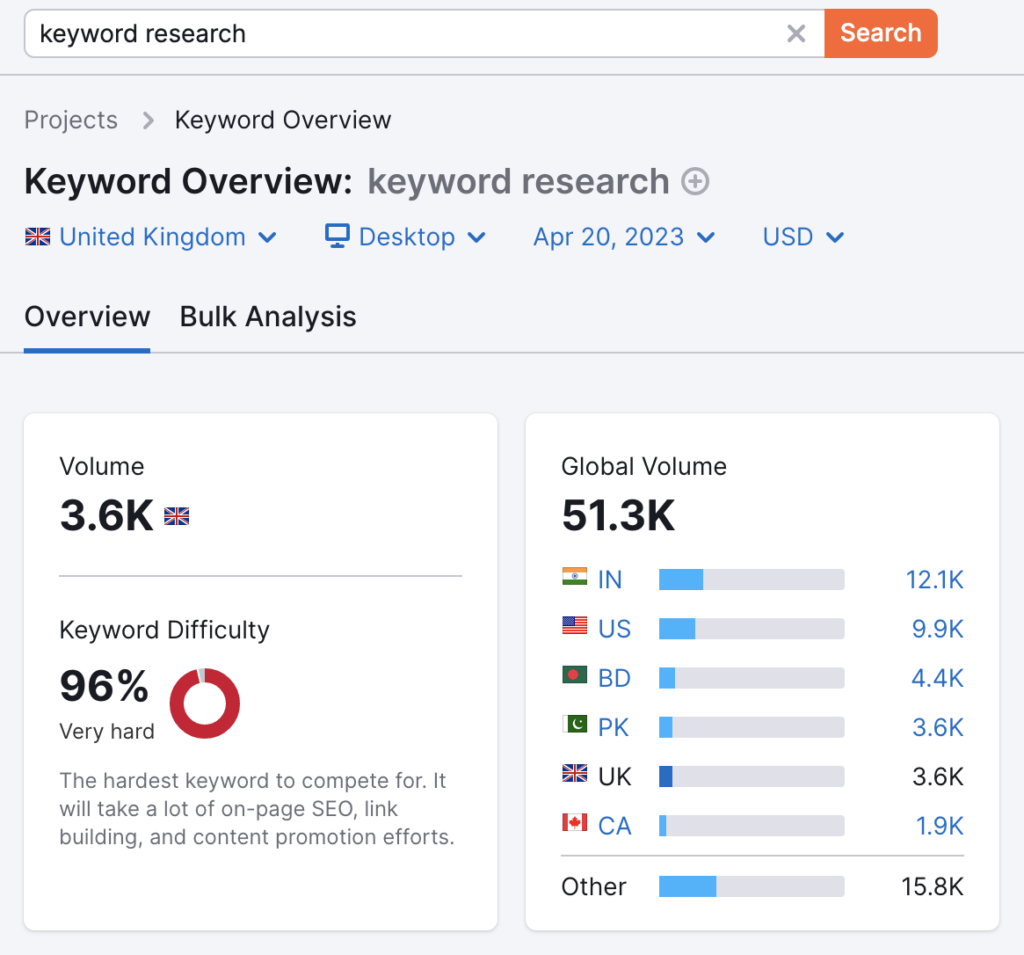In the ever-evolving world of digital marketing, businesses constantly strive to improve their online visibility and generate valuable leads. Search engine optimisation (SEO) has become a cornerstone of these efforts, enabling companies to rank higher on search engine results pages (SERPs) and attract a steady stream of organic traffic. One of the most effective ways to harness the power of SEO and generate leads is through inbound marketing.
Inbound marketing focuses on attracting potential customers by offering them valuable, relevant content and experiences tailored to their needs and preferences. By creating and sharing content that resonates with your target audience, you position your brand as a trusted source of information and solutions. This approach not only drives organic traffic to your website but also builds credibility, loyalty, and lasting relationships with your audience.
In this blog post, we’ll explore the 5 essential steps for generating SEO leads with inbound marketing. From identifying your target audience and optimising your content for search engines to nurturing leads with email marketing, these strategies will help you create a robust and effective inbound marketing plan that drives results.
So, let’s dive in and uncover the keys to success in generating SEO leads through inbound marketing.
Section 1: Identifying Your Target Audience
Before you can create an effective inbound marketing strategy, it’s essential to have a clear understanding of who your target audience is. Identifying your target audience will help you create relevant, engaging content that addresses their specific needs, challenges, and interests. Here are some key steps to help you identify and understand your target audience:
1.1 Creating Buyer Personas
Buyer personas are fictional representations of your ideal customers based on demographic, behavioral, and psychographic data. Developing detailed buyer personas can help you better understand your customers, their preferences, and their pain points. When crafting your personas, consider factors like age, gender, location, job role, income level, education, and interests. Also, consider their goals, challenges, and motivations, as well as the types of content they prefer.
1.2 Analysing Competitors’ Target Audience
Understanding who your competitors are targeting can provide valuable insights into potential gaps and opportunities within your industry. Analyse your competitors’ marketing efforts and the type of content they create. Determine whether their target audience overlaps with yours or if there are untapped segments that you can cater to.
1.3 Using Analytics Tools to Identify Your Audience
Leverage the power of analytics tools like Google Analytics, Google Search Console, and social media analytics to gather data on your current audience. Look for patterns and trends that can help you refine your buyer personas and better understand who is engaging with your content. Analyse metrics like demographics, location, interests, and online behavior to get a comprehensive view of your audience.
By identifying your target audience, you can tailor your inbound marketing strategy to address their specific needs, interests, and preferences. This will not only improve your chances of generating SEO leads but also establish your brand as a trusted resource in your industry.

Section 2: Keyword Research and Optimisation
To generate SEO leads with inbound marketing, your content must rank well on search engine results pages (SERPs). This requires conducting keyword research and optimising your content for search engines. Here are some key aspects of keyword research and optimisation:
2.1 Fundamentals of Keyword Research
Keyword research involves finding and analysing the search terms that people use to find information related to your industry or niche. By targeting these keywords in your content, you can improve your search engine rankings and increase the visibility of your website. The goal is to identify keywords with high search volume and low competition, which represent the best opportunities to rank higher on SERPs.
2.2 Long-tail Keywords and Their Benefits
Long-tail keywords are longer, more specific search phrases that typically have lower search volume but higher conversion rates. These keywords are easier to rank for because they have less competition and are more targeted, attracting an audience that is more likely to convert. Incorporating long-tail keywords into your content strategy can help you generate more qualified leads and improve your overall SEO performance.
2.3 Tools for Keyword Research and Analysis
There are numerous tools available for conducting keyword research, such as Google Keyword Planner, Moz Keyword Explorer, and SEMrush. These tools can help you identify relevant keywords, assess their search volume and competition, and uncover related search terms that you may not have considered. By using these tools, you can create a comprehensive list of keywords to target in your content and optimize your website accordingly.
2.4 On-page SEO Optimisation
Once you have identified the keywords you want to target, it’s essential to optimize your content to rank higher on SERPs. On-page SEO optimisation involves strategically placing your target keywords within your content, such as in the title, headings, meta description, URL, and body text. Be sure to use your keywords naturally and avoid keyword stuffing, which can negatively impact your rankings. Additionally, consider other on-page factors like internal and external linking, image optimization, and page load speed to improve your overall SEO performance.
By conducting thorough keyword research and optimising your content for search engines, you can increase your website’s visibility and generate more SEO leads through inbound marketing.

Section 3: Creating High-Quality, Valuable Content
The cornerstone of any successful inbound marketing strategy is high-quality, valuable content that addresses your target audience’s needs and interests. By providing your audience with informative and engaging content, you can attract more visitors to your website, generate SEO leads, and establish your brand as an industry authority. Here are some tips for creating content that resonates with your audience:
3.1 Types of Content to Produce
Diversify your content offerings to cater to different audience preferences and platforms. Consider producing a variety of content types, such as blog posts, videos, infographics, webinars, podcasts, case studies, and whitepapers. This will not only keep your audience engaged but also help you reach new potential customers on different platforms.
3.2 Content that Addresses Your Audience’s Pain Points
To create content that truly resonates with your target audience, focus on addressing their pain points and providing solutions to their challenges. By providing value and helping your audience overcome their obstacles, you can build trust and credibility, which can ultimately lead to more SEO leads.
3.3 Content that Showcases Your Expertise
Establish your brand as an industry authority by creating content that demonstrates your expertise and knowledge in your field. Share your unique insights, experiences, and best practices to set your brand apart from competitors and showcase your value to potential customers.
3.4 Content Promotion Strategies
Creating high-quality, valuable content is only half the battle; you must also ensure that your target audience can find and engage with it. Develop a content promotion strategy to amplify your reach and increase your chances of generating SEO leads. Leverage social media platforms, email marketing, guest posting, influencer collaborations, and other promotional channels to drive traffic to your content and improve its visibility.
By focusing on creating high-quality, valuable content that resonates with your target audience, you can attract more organic traffic, generate SEO leads, and establish your brand as a trusted resource in your industry. This, in turn, will help you build lasting relationships with your audience and drive long-term success for your inbound marketing efforts.
Section 4: Leveraging Social Media
Social media platforms have become an integral part of inbound marketing, providing an opportunity to connect with your target audience, share your content, and generate SEO leads. By strategically leveraging social media, you can expand your reach, engage with your audience, and drive traffic to your website. Here’s how to make the most of social media in your inbound marketing strategy:
4.1 Choosing the Right Social Media Platforms
Not all social media platforms are equally suited to your business or audience. To make the most of your efforts, focus on the platforms that are most popular among your target audience and best aligned with your content strategy. For example, LinkedIn may be more effective for B2B companies, while Instagram might be better suited for visually-driven industries.
4.2 Engaging with Your Audience
Social media is an excellent platform for building relationships with your audience, so take the time to engage with them through likes, comments, and shares. Respond to their questions and feedback, and participate in conversations related to your industry. By actively engaging with your audience, you can humanise your brand and foster a sense of community that encourages loyalty and trust.
4.3 Utilising Social Media Advertising to Drive Traffic
Organic reach on social media can be limited, especially on platforms with high competition. Consider using social media advertising to boost your content’s visibility and reach a larger audience. Platforms like Facebook, Instagram, and LinkedIn offer targeted advertising options that allow you to promote your content to specific segments of your target audience based on demographics, interests, and behavior.
4.4 Tracking Social Media Metrics
To ensure your social media efforts are generating results, it’s essential to track key performance indicators (KPIs) like engagement, reach, and conversions. Use analytics tools provided by social media platforms or third-party solutions to monitor your performance and identify areas for improvement. By regularly analysing your social media metrics, you can refine your strategy and optimize your efforts for better results.
By leveraging social media effectively, you can expand your reach, engage with your target audience, and drive traffic to your website, ultimately generating more SEO leads through your inbound marketing strategy.

Section 5: Implementing Effective Call-to-Actions (CTAs)
Call-to-actions (CTAs) play a crucial role in converting website visitors into leads and customers. By guiding your audience towards a specific action, you can increase engagement, drive conversions, and ultimately generate more SEO leads. Here’s how to create and implement effective CTAs in your inbound marketing strategy:
5.1 Importance of CTAs in Lead Generation
CTAs are essential for encouraging your audience to take the next step in their buyer’s journey, whether that’s signing up for a newsletter, downloading a whitepaper, or making a purchase. By clearly communicating the action you want your audience to take and the benefits they’ll receive, you can increase the likelihood of conversion and generate more leads.
5.2 Creating Compelling CTAs
To create compelling CTAs, focus on using clear, concise language that conveys the value of the action you’re encouraging. Use strong action verbs and persuasive phrases that emphasise the benefits your audience will receive. Personalise your CTAs whenever possible to make them more relevant and appealing to your target audience.
5.3 Best Practices for Placing CTAs on Your Website
The placement of your CTAs can significantly impact their effectiveness. Here are some best practices for CTA placement:
- Place your CTAs above the fold, so they’re immediately visible when visitors land on your page.
- Position your CTAs within the natural flow of your content, so they don’t disrupt the user experience.
- Include CTAs in multiple locations on your website, such as blog posts, sidebars, and pop-ups, to increase the chances of conversion.
- Test different CTA placements and designs to determine what works best for your audience and optimize accordingly.
By implementing effective CTAs in your inbound marketing strategy, you can guide your audience towards desired actions, increase conversions, and generate more SEO leads. Remember to continually test and refine your CTAs to optimise their performance and maximise your lead generation efforts.
SEO Lead Generation Conclusion
Generating SEO leads with inbound marketing is a powerful and sustainable approach to driving organic traffic and nurturing lasting relationships with your target audience. By following the essential steps outlined in this blog post, you can create a comprehensive inbound marketing strategy that delivers tangible results.



